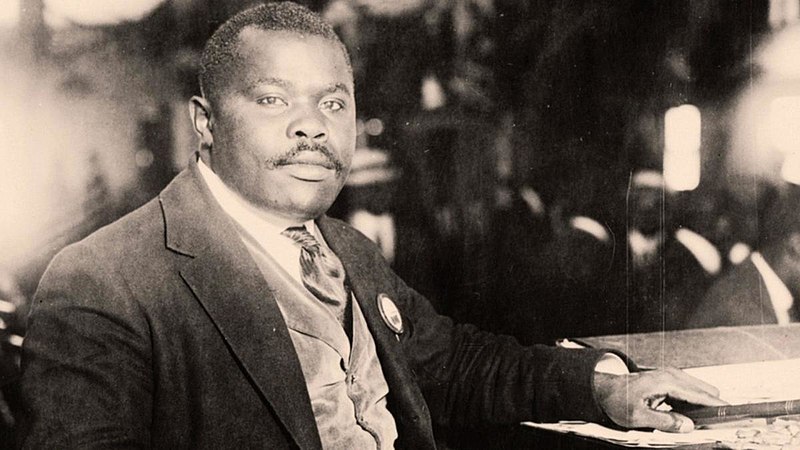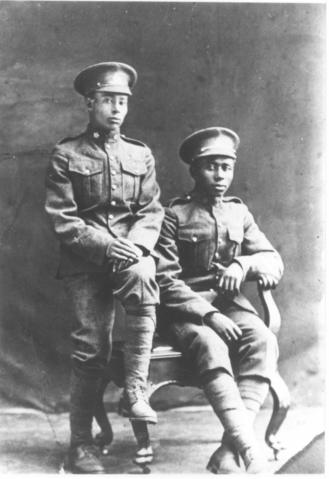The Universal Negro Improvement Association and African Communities League (UNIA-ACL) was a Black nationalist organization founded by Marcus Garvey. Garvey’s experiences with racial inequality propelled him to create the UNIA in Jamaica in 1914. The UNIA fostered racial pride and the ACL brought attention to Africa within the Black diaspora. The UNIA became one of the most successful Black organizations in world history. It had 1,000 divisions and claimed to have 6 million members in 40 countries. In both the United States and Canada during the 1920s, the UNIA was a leading force for Black nationalism, pan-African identity and self-reliance. Canada’s small Black population supported up to 32 UNIA divisions. (See Black Canadians.)
Background of the UNIA-ACL
In the early 20th century, Marcus Garvey, originally from Jamaica, travelled in England, Central America and the Caribbean. (See Caribbean Canadians.) He found that Black people were being exploited and suffered greatly. He resolved to create a mutual aid and racial uplift organization to bring them collective purpose and hope.
Garvey founded the UNIA in Kingston, Jamaica, in 1914. In 1916, Garvey moved to Harlem. In 1918, the UNIA incorporated there under two key tenets:
- Black nationalism: unity, pride in the African cultural heritage and complete autonomy
- “Back-to-Africa”: meaning the eventual return to Africa of all people of African descent to form an independent nation.
At the time, racial discrimination and the practice of lynching Black people were at their height. (See Anti-Black Racism in Canada.) Black people were also confronted by social segregation and political disenfranchisement. (See Racial Segregation of Black People in Canada.)
As such, Garvey’s radical message resonated. The UNIA experienced exponential worldwide growth in the 1920s.
Garvey’s UNIA created a plethora of activities, divisions and auxiliary groups that engaged all age groups. The UNIA instituted programs “to stimulate the economy, raise morale among black citizens, and educate the population.”

UNIA-ACL in Canada
By 1922, Canada had 32 UNIA chapters and up to 5,000 members. The most active chapters were in Montreal, Toronto and Sydney, Nova Scotia. Most card-carrying members were highly educated West Indians. (See Caribbean Canadians.) Through the UNIA, they stayed connected with West Indians elsewhere. Furthermore, UNIA divisions often pooled community resources and fought against housing and employment discrimination.
The UNIA’s Liberty Halls (or community centres) became important hubs. In rural areas, they were critical to community vitality, as they were often the only place for non-Church activities. Liberty Halls became gathering places for meetings, dances, town halls, socials, picnics, literary clubs and excursions. At Liberty Halls, speakers lectured without fear of violence or racial discrimination. To accommodate visitors, and avoid being turned away at local hotels, some divisions had sleeping areas. These accommodations were also used by other fraternal and philanthropic groups such as the Black Masons, Oddfellows, Elks and Black Lodges.
Worldwide, the Liberty Halls had an education mandate to “emancipate” people’s minds. Members’ classes included African history, philosophy, religion, leadership, economics and politics. (See also Black History in Canada: 1900-1960.)
Montreal UNIA-ACL
On 9 June 1919, one of the first Canadian branches of the UNIA, Division 5, was founded in Montreal. Within a year, there were 400 members. It peaked at 700 members, making it the largest and most active division in Canada. The division fought for years against hostile city councillors and neighbours to find a permanent home in Little Burgundy. They eventually moved near the Negro Community Centre.
The Montreal UNIA offered a robust program and enthusiasm remained high. Montreal Garveyites were loyal to the tenets and committed to Marcus Garvey. They attended UNIA conferences here and abroad.
New Aberdeen, Glace Bay, Nova Scotia: UNIA-ACL
In 1916, the New Aberdeen UNIA opened in Cape Breton, Nova Scotia. West Indian (See Caribbean Canadians) refinery workers and miners, already familiar with Marcus Garvey’s message, flocked to its activities.
Cape Breton’s UNIAs had a significant impact in Canada and abroad. The first UNIA High Commissioner of Canada, George Creese, was from the New Aberdeen UNIA-ACL. Criss-crossing the country, Creese established many UNIA divisions.
In 1937, just before leaving North America, Garvey visited several UNIA divisions in Nova Scotia. His speech in Sydney was notably transcribed and was immortalized in Bob Marley’s “Redemption Song.”
Toronto UNIA-ACL
In Toronto, several West Indians (see Caribbean Canadians) received their UNIA charter on 1 December 1919. They held meetings at Occidental Hall. Members fundraised, and in 1925 they acquired the building at 355 College Street. Membership grew slowly; at its peak, the branch had 200–300 members. The Toronto Liberty Hall closed in 1982.
Toronto played a key role in sustaining the pan-African UNIA, particularly during the 1930s. Deported from the US, Garvey settled in London, England. But as most followers were in North America, he moved to Toronto in 1937. From there, Marcus Garvey tried to manage UNIA affairs worldwide. Garvey also taught at his School of African Philosophy (see Philosophy). The Toronto division hosted two regional conferences in 1936–37. The last UNIA international convention before Garvey’s death happened in Toronto in 1938.
Legacy
Garveyism was the first major Black nationalist movement in North America. For a time in Canada, the UNIA was the most important Black socio-economic and educational force. After Marcus Garvey’s death in 1940, activities and membership in Canada declined, but not everywhere. Alumni of Toronto’s School of African Philosophy pushed for civil rights. They fought to dismantle racial segregation in education and employment while easing immigration restrictions. (See Racial Segregation of Black People in Canada; Immigration Policy in Canada.)
In Canada, Garvey’s legacy remains considerable. Marcus Garvey Day has been celebrated on 17 August since 1993. In 2002, Toronto’s Marcus Garvey Centre for Leadership and Education was founded to provide leadership development and training to youth. Around in 1983, the Montreal UNIA opened The Garvey Institute, and in 1991 the Institute became Quebec’s first private Black school. Today, the Glace Bay UNIA Community Hall runs a cultural museum. It also hosts an annual summer festival in Marcus Garvey’s honour.

 Share on Facebook
Share on Facebook Share on X
Share on X Share by Email
Share by Email Share on Google Classroom
Share on Google Classroom




